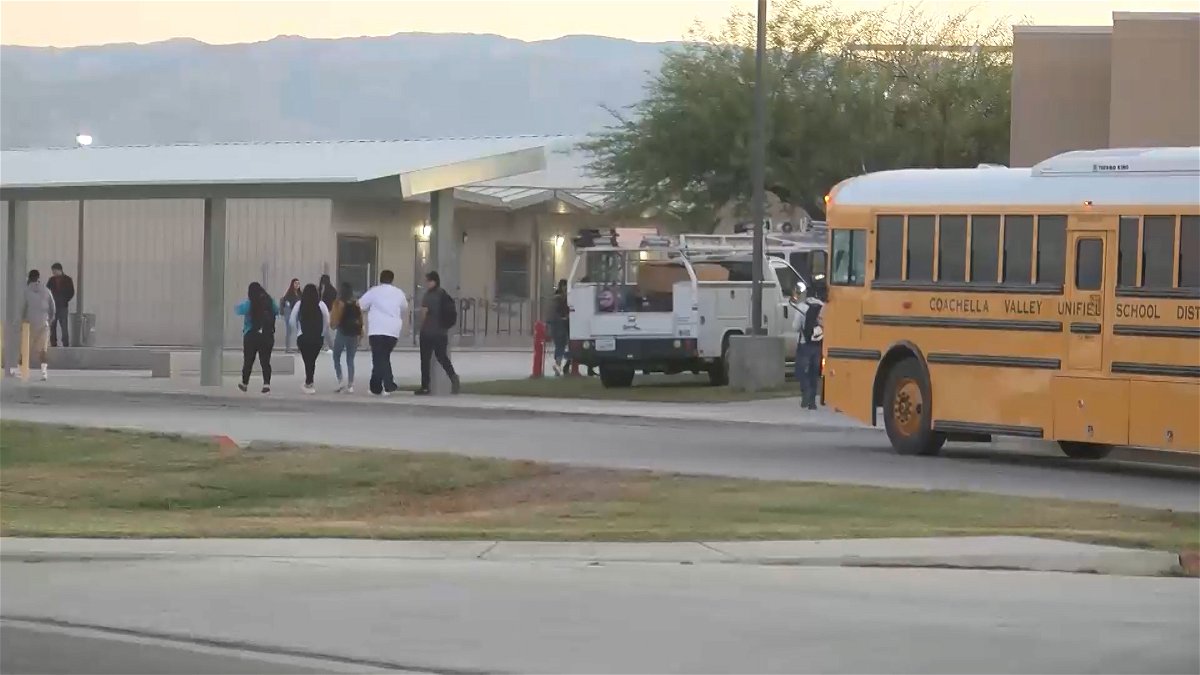How “restorative justice” programs are improving CVUSD suspension rates and school climate

The Coachella Valley Unified School District has been taking a different approach when it comes to its disciplinary policies.
Schools within the district have been turning to “restorative justice” programs. As a result, they’ve seen significant improvements in suspension rates and overall school climate.
For decades, east valley communities have experienced higher rates of poverty and lower rates of high school graduation.
A new case study from Advancement Project California suggests that restorative justice programs within the school system might be an effective solution.
“Restorative justice in schools is really about a culture shift away from zero tolerance,” said Patricia S. Carrillo, Alianza Coachella Valley.
The current restorative justice programs offered in CVUSD schools are led by the group Alianza Coachella Valley.
Alianza explains the goal of restorative justice is to encourage better communication by changing the way students are disciplined in school.
Instead of automatically disciplining a student, teachers are now trained to open up a conversation first -- trying to communicate and identify the underlying challenges a student might be facing in their life.
“For example, you’ll have students who say, ‘Well I was late to class because my grandparent passed away. So I was having trouble getting a ride to class each day this week,’” explained Carillo.
“We no longer send kids to detention. We don’t use the ‘D word’ any longer,” said Jerry Carmona, a life skills teacher at Coachella Valley High School. “Instead, we send them to restorative justice classes after school where they can make amends for whatever bad decision they may have made that day. We teach them the district cares about you, the school cares about you and we’re here to listen.”
Coachella Valley High School teacher Jerry Carmona explains restorative justice is about taking the time to understand a child’s behavior and the root cause of negative patterns.
He provides another example of a student that was late three days in a row: “I said what’s going on? He says well I walk every day. It’s over a mile...and then when I get to school the cafeteria is closed so I can’t get my breakfast.”
Instead of immediately suspending the student, Carmona says they start a conversation and work together to find a solution.
“We train the teachers...they’re understanding now to question the child,” said Carmona.
The restorative justice campaign also seeks to improve communication between the teacher and parents at home.
“The school is like the second house. [Teachers] are like the second parents,” said Sandra Ramirez, a CVUSD parent.
Ramirez has two sons who have gone through the restorative justice programs in school. She says she’s seen the difference it makes firsthand: “The students start to have more confidence to tell the teacher how they feel.” She says her sons started participating more in class as the programs promote engagement and conversation.
Her sons say they’ve seen it too. “In my opinion it gives the student and teacher a better bond and communication,” said Cristian Ramirez, restorative justice program participant. “Teachers act more friendly with the kids...they act like friends with them,” added his brother, Dante Ramirez.
The new case study from Advancement Project California found that school’s using the restorative justice approach experienced:
- Reduced suspension rates
- Improved class participation and
- Better relationships between students, parents and district staff.
As part of the program, teachers also take time to simply talk to their students in roundtable class discussions called “restorative justice circles.”
Within these circles, teachers encourage students to open up about their home life, their struggles and their ambitions.
“We’re here to listen to why you’re having problems, and come up with some student-based solutions,” said Carmona.
According to Alianza, the ultimate goal is to create a classroom culture of trust, community and understanding.
Currently, all middle and high school staff members within CVUSD are being trained in restorative justice, but the case study recommends the program be implemented across all CVUSD schools in the future.
